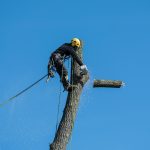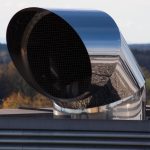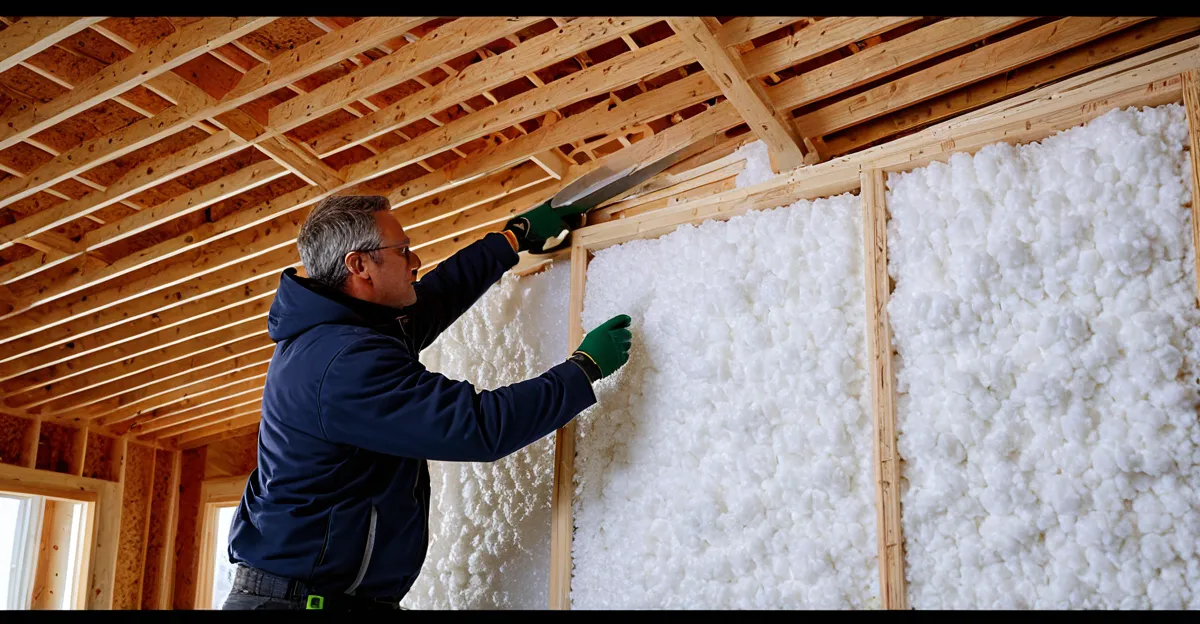EPS insulation combines lightweight design with excellent thermal performance, reducing energy costs while enhancing comfort across floors, walls, and roofs. Its resistance to moisture, pests, and mold ensures durability, making it a smart, versatile choice for both new builds and renovations. Understanding these benefits helps homeowners make informed decisions about effective, long-lasting insulation solutions.
Essential facts about EPS insulation: uses, properties, and value
As a lightweight, rigid foam developed from expanded polystyrene beads, EPS insulation stands out for its impressive thermal efficiency, moisture resistance, and practicality across construction projects. Its composition—hundreds of thousands of air-filled cells within a white foam board—delivers excellent heat retention and inhibits water absorption, supporting durability and helping prevent mold.
Also read : Reliable bathroom fitters in bexleyheath for your home upgrade
EPS insulation boards are most commonly applied to floors, walls, roofs, and as external wall insulation panels. Installers select board thicknesses and densities suited to specific needs: from 12mm for tight spaces to 100mm or more for high-insulation demands. These variants are cut for easy adaptation and lightweight handling. Boards are often bonded or mechanically fixed, with installation practices including edge-wrapping and close-fitting for consistent protection.
A focus on thermal efficiency means energy savings and compliance with energy codes in 2025, as EPS meets rigorous regulatory requirements and British Board of Agreement certifications. Its cost-effectiveness and ease of installation add further value, reducing labour time without compromising on durability, mechanical performance, or pest resistance—making it a leading modern insulation choice.
Also to discover : Essential guide to asbestos removal in Biggin Hill
Types, Sizes, and Installation Best Practices for EPS Boards
EPS insulation boards are available in a range of grades—EPS1, EPS2, EPS7, EPS15, and EPS25—with each type suitable for different building applications. Grading is based on density and compressive strength: lower grades work well in wall cavities or lofts, while higher grades like EPS15 and EPS25 are used for heavy floor loads or commercial use.
Standard board sizes commonly measure 2440mm x 1220mm or 1200mm x 600mm. Thickness options span from 5mm up to 100mm or more, providing flexibility for various insulation needs. For external wall insulation, products like Jablite HP+ 7E often come in 1200mm x 600mm sheets, while Kingspan GreenGuard is designed for demanding floors and cold store environments.
For effective installation, careful substrate preparation is key—clean, dry, even surfaces ensure optimal adhesion and reduce thermal bridging. Boards may be mechanically fixed using insulation fixings or bonded with foam-compatible adhesives. All exposed edges should be protected with insulation strips to maintain efficiency and prolong lifespan.
Cutting EPS boards is straightforward: use a sharp utility knife or a fine-tooth saw for clean edges. Expansion gaps should always be left at the perimeter of floors or walls, especially when overlaid with particleboard or screed, to accommodate movement and prevent damage.
Cost, alternatives, performance, and building code considerations
EPS insulation boards are recognized for their affordability and versatility. The price fluctuates based on thickness, board size, and EPS type. Thinner boards (5mm–25mm) tend to be lowest in cost, with bulk packs (such as 24 boards of 25mm) yielding extra savings—particularly relevant for large projects. Thicker options (75mm–100mm) cost more but offer improved performance per square metre. Buyers can expect further price differences between standard and enhanced variants.
When weighing EPS against XPS, EPS is typically less expensive and more environmentally friendly, as it’s made by expanding polystyrene beads with steam. XPS uses extrusion, offering marginally lower thermal conductivity, but often at a higher price point. Comparing EPS to PIR, PIR usually provides higher insulation per thickness but comes with a considerable cost increase, making EPS attractive where budget matters.
Regarding compliance, EPS insulation must adhere to building regulations specifying permissible uses, minimum thickness requirements, and fire rating standards. Certified boards—such as those listed by the British Board of Agreement—ensure regulatory acceptance for walls, roofs, and floors, provided installation follows guidance on edge sealing and fire safety clearances. This supports both performance goals and safety mandates for new builds and retrofits.
Safety, sustainability, and longevity of EPS insulation in construction
EPS insulation demonstrates strong fire safety characteristics when correctly installed. Its composition includes flame retardants, making it slow to ignite under normal circumstances. Compliance with current building codes means EPS must not be exposed directly to ignition sources and should be protected or encapsulated by suitable barriers like plasterboard, especially near chimneys or heating elements. If fire does occur, however, EPS can contribute to flame spread when unprotected. Proper handling during installation and adherence to spacing guidelines become essential for safety.
From an environmental standpoint, EPS is recyclable and uses less energy in production compared to many alternatives. The material resists moisture, preventing rot, and offers no nutritional value for pests, which helps to avoid both insect infestations and mold growth. EPS’s closed-cell structure supports its role in sustainable construction by maintaining insulation properties even in damp environments.
Longevity is a hallmark of EPS, with products frequently achieving lifespans in excess of 100 years, given correct installation. EPS’s resistance to water and physical stress maintains its insulating power over decades. Factors like UV exposure and mechanical damage should still be managed to protect EPS’s performance through the years.
Expanded Polystyrene (EPS) Insulation: Key Properties and Application Insights
EPS insulation is constructed from rigid, closed-cell foam crafted by expanding polystyrene beads with heat. This creates a material prized for its combination of lightweight design, moisture resistance, and durability. Its closed-cell structure means minimal water absorption, mitigating mold growth risks.
The boards are offered in a spectrum of thicknesses—from slim 12mm layers for minor upgrades up to robust 100mm panels for high-performance needs. Standard dimensions, such as 2440mm x 1220mm or 1200mm x 600mm, allow them to suit common floor, wall, and roof cavities.
EPS is versatile and simple to cut using a sharp knife or scoring tool, facilitating fast, accurate installation in both retrofits and new constructions. Thermal performance is strong, with low thermal conductivity ratings (typically around 0.033–0.034 W/m·K), helping households and businesses conserve energy for decades after installation.
Installation practice requires meticulous edge-wrapping and tight butting to deliver continuous insulation. Additional fire safety precautions are necessary—EPS must never be installed near sources of high heat. When properly handled, its lifespan exceeds 100 years and the material remains stable, efficient, and pest-resistant.











